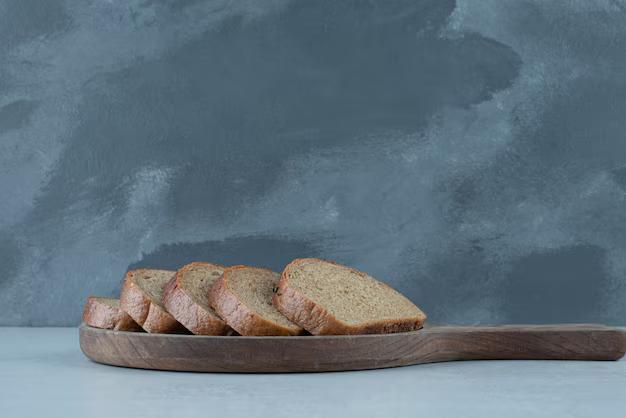Do You Really Need to Store Your Bread in the Refrigerator? Unveiling the Secrets of Bread Storage
Strolling through the kitchen, you pause before putting that freshly baked loaf in its place. Should bread be stored in the refrigerator, and if so, will it last longer? This is a common question among many households, where bread is a staple food that tends to spoil quickly. Understanding the best practices for bread storage can make a significant difference in its shelf life, freshness, and taste. Let's dive deep into the world of bread preservation and unveil the secrets to keeping your bread as fresh as the day it was baked.
The Science Behind Bread Storage
Why Does Bread Go Stale?
To comprehend the best storage practices, it's essential to first understand why bread goes stale. Bread stales primarily due to a process called starch retrogradation. After baking, the starch molecules in bread begin to crystallize, causing the bread to lose moisture and become hard. This natural process is accelerated when bread is exposed to air, which is why proper storage is crucial.
The Refrigerator Conundrum
Many people believe that storing bread in the refrigerator will extend its shelf life. This misconception stems from the idea that cooler temperatures preserve food. While the refrigerator can help prolong the freshness of some foods, it often has the opposite effect when it comes to bread.
How Refrigeration Affects Bread:
- Accelerated Staling: Refrigeration speeds up the starch retrogradation process, making bread stale faster.
- Moisture Loss: The cold environment may enhance moisture loss, leading to dry bread.
Mold Prevention
While refrigeration can cause bread to stale faster, it does help prevent mold growth. Mold thrives in warm, humid environments; therefore, cooler temperatures can inhibit its growth.
Optimal Ways to Store Bread
Room Temperature: The Gold Standard
For most types of bread, storing at room temperature in a dry environment is ideal. Bread storage at room temperature allows for maintaining both freshness and taste.
Tips for Room Temperature Storage:
- Use a Bread Box: A bread box shields bread from air exposure while maintaining a moderate climate, ideal for freshness.
- Keep It Wrapped: Store bread in a reusable cotton bag or leave it in its original packaging with the opening loosely twisted.
Freezing: The Best Long-term Option
When it comes to extending the life of your bread without compromising quality, freezing is a superior option. Bread can be frozen effectively to preserve its taste and texture for several weeks, if not months.
Freezing Tips:
- Slice Before Freezing: Freezing individual slices allows for easy thawing and prevents waste.
- Double Wrap: Use both a plastic wrap and an airtight container or freezer bag to prevent freezer burn and moisture loss.
Bread Storage for Different Types
Homemade vs. Store-Bought
Homemade bread often lacks preservatives found in store-bought varieties, leading to a shorter shelf life. Proper storage of homemade bread is crucial.
Storage Suggestions:
- Homemade Bread: Favor freezing to extend the life beyond a few days.
- Store-Bought Bread: These can last longer at room temperature due to preservatives. Consider refrigeration only to avoid mold, but expect faster staling.
Specialty Breads
Certain breads, like sourdough, might differ in their storage needs due to unique ingredients or baking processes. Sourdough bread, for instance, contains natural acids that acidify the bread and slow mold growth.
Tips for Specialty Breads:
- Sourdough: Store in a paper bag at room temperature for optimal shelf life.
- Rye and Whole Grain Breads: Also benefit from room temperature storage but may have a shorter freshness window if homemade.
Practical Tips for Consumers 📝
To wrap up our journey through bread storage, here's a quick summary to help you keep your bread fresh and enjoyable:
- 🌡️ Room Temperature: Best for most breads. Use a bread box or cotton bag.
- 🧊 Freezing: Optimal for long-term storage. Freeze in slices, double-wrapped.
- 🧺 Bread Type Matters: Home-baked needs more care than store-bought.
- 🚫 Avoid Refrigeration: Usually causes faster staling except for anti-mold purposes.
- 🦠 Mold Awareness: Consider climate; cool, dry spaces reduce mold growth.
Bread Storage Myths Debunked
Myth: Bread Boxes are Obsolete
Far from being a relic of the past, bread boxes play a vital role in keeping airflow at bay and maintaining a moderate temperature, crucial for slowing down the staling process.
Myth: Storing Bread in Plastic Causes Mold
While it’s true plastic can trap moisture, which may encourage mold growth, using it wisely—like for freezing or in cases with little moisture—is beneficial. Consider using bags with tiny perforations to reduce trapped humidity.
Elevate Your Bread Game
There’s an art to bread storage that, when understood, allows you to enjoy it in its freshest, tastiest form. Choosing the proper storage method for your bread type and consumption pace will help ensure minimal waste and maximize enjoyment—no more tossing out stale loaves!
Next time you're in the kitchen deciding where to store your beloved loaf, remember these insights and tips. With them, you'll not only extend the life of your bread but also enhance the overall dining experience.
